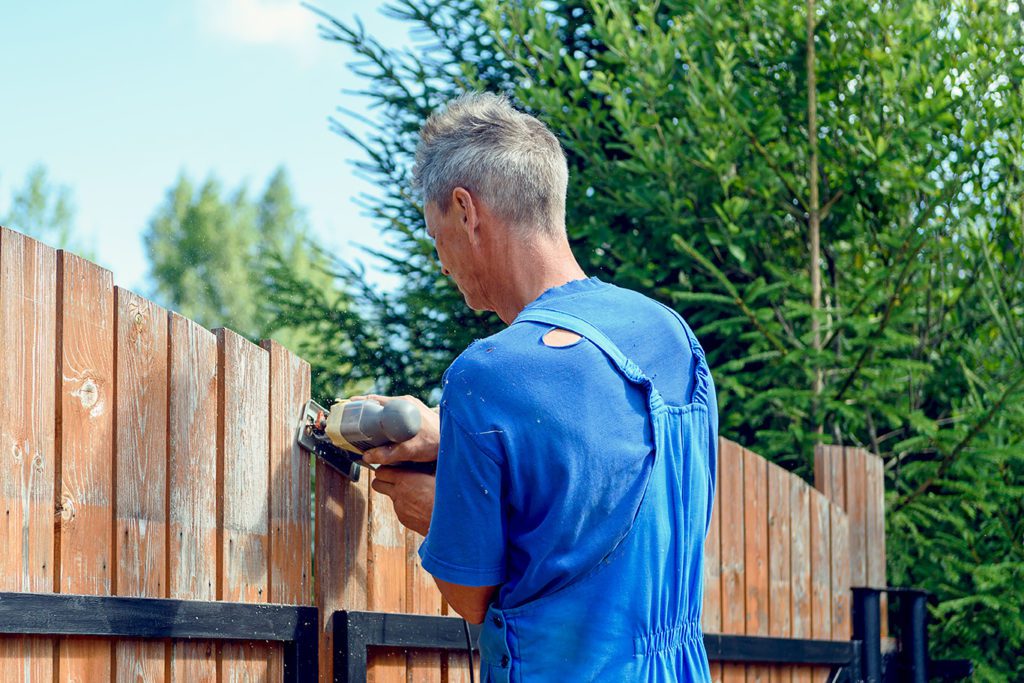Fencing is an essential part of any property, providing privacy, security, and aesthetic appeal. However, many people overlook the complex process of fence installation, assuming it’s a simple task. In reality, there are various steps and timelines involved in building a quality fence that lasts for years. If you’re planning to install a fence, it’s essential to understand the behind-the-scenes process to ensure that you get a high-quality build. From selecting the right materials to understanding the local regulations and permits, there’s a lot that goes into building a sturdy fence that meets your specific needs. In this article, we’ll dive into the nitty-gritty of fence installation, taking a look at the timelines and steps involved in creating a fence that stands the test of time. So, if you’re wondering what goes on behind the scenes of fence installation, keep reading!
The Importance of Understanding Fence Installation Timelines and Steps
The installation is a multi-step process that requires careful planning, precise measurements, and attention to detail. The timeline for fence installation varies depending on several factors, including the size of the property, the type of fence, and the weather conditions. It’s crucial to understand the timeline and steps involved in fence installation to ensure that you get a high-quality build that meets your specific needs.
Selecting the Right Materials for Your Fence
Choosing the right materials is crucial to the success of your fence project. There are several types of materials to choose from, including wood, vinyl, aluminum, and steel. Each material has its unique advantages and disadvantages, and it’s essential to consider your specific needs, budget, and aesthetic preferences when selecting the right materials for your fence. For instance, if you’re looking for a fence that provides privacy, a wooden fence might be a good option. On the other hand, if you’re looking for a low-maintenance fence, vinyl might be the right choice.
Understanding Local Regulations and Permits
Before starting your fence installation project, it’s essential to understand the local regulations and permits that govern installation in your area. Local regulations and permits vary depending on the city or state, and it’s crucial to comply with the regulations to avoid legal issues. For instance, some areas have specific height restrictions for fences, while others require permits for fence installation. By understanding the local regulations and permits, you can ensure that your fence installation project meets the legal requirements.
Preparing Your Property for Fence Installation
Preparing your property for fence installation is a critical step in ensuring a successful installation project. Before starting the installation process, it’s essential to mark the property boundaries, remove any obstacles or debris, and level the ground. If you’re installing a on a slope, you might need to consider special installation techniques to ensure that the fence is level. It’s also crucial to ensure that there are no underground utilities in the area where you plan to install the fence.
The Actual Fence Installation Process
The actual installation process involves several steps, including digging holes for the posts, setting the posts in concrete, attaching the rails and pickets, and adding any necessary finishing touches. The process varies depending on the type of fence and the materials used. For instance, the installation process for a wooden fence might differ from that of a vinyl fence. It’s essential to follow the manufacturer’s instructions carefully to ensure that the fence is installed correctly.
Quality Control and Finishing Touches
Once the fence installation is complete, it’s essential to conduct a thorough quality control check to ensure that everything is in order. This involves checking the fence for any defects, ensuring that it’s level and straight, and fixing any issues that arise. After conducting a quality control check, you can add any necessary finishing touches, such as painting or staining the fence, to enhance its aesthetic appeal.
Maintaining Your Fence for Longevity
Proper maintenance is crucial to the longevity of your fence. Regular maintenance involves cleaning the fence, inspecting it for damage, and repairing any issues that arise. It’s also essential to protect the fence from harsh weather conditions, such as wind and rain, to prevent damage. By maintaining your fence regularly, you can extend its lifespan and ensure that it continues to provide privacy and security for years to come.
Hiring a Professional Fence Installer vs. DIY Installation
While some people might choose to install their fence as a DIY project, hiring a professional fence installer has several advantages. Professional installers have the expertise, experience, and equipment needed to ensure that the fence is installed correctly. They also have knowledge of local regulations and permits, which can help you avoid legal issues. Hiring a professional fence installer can save you time and money in the long run and ensure that you get a high-quality build.
Frequently Asked Questions About Fence Installation
How long does it take to install a fence? The timeline for installation varies depending on several factors, including the size of the property, the type, and the weather conditions. On average, it takes around 2-3 days to install a fence.
Conclusion: The Importance of Investing in a Quality Fence Installation
In conclusion, fence installation is a complex process that requires careful planning, precise measurements, and attention to detail. By understanding the behind-the-scenes process of fence installation, you can ensure that you get a high-quality build that meets your specific needs. From selecting the right materials to understanding local regulations and permits, each step is crucial to the success of your installation project. By investing in a quality fence, you can enhance the privacy, security, and aesthetic appeal of your property for years to come.

